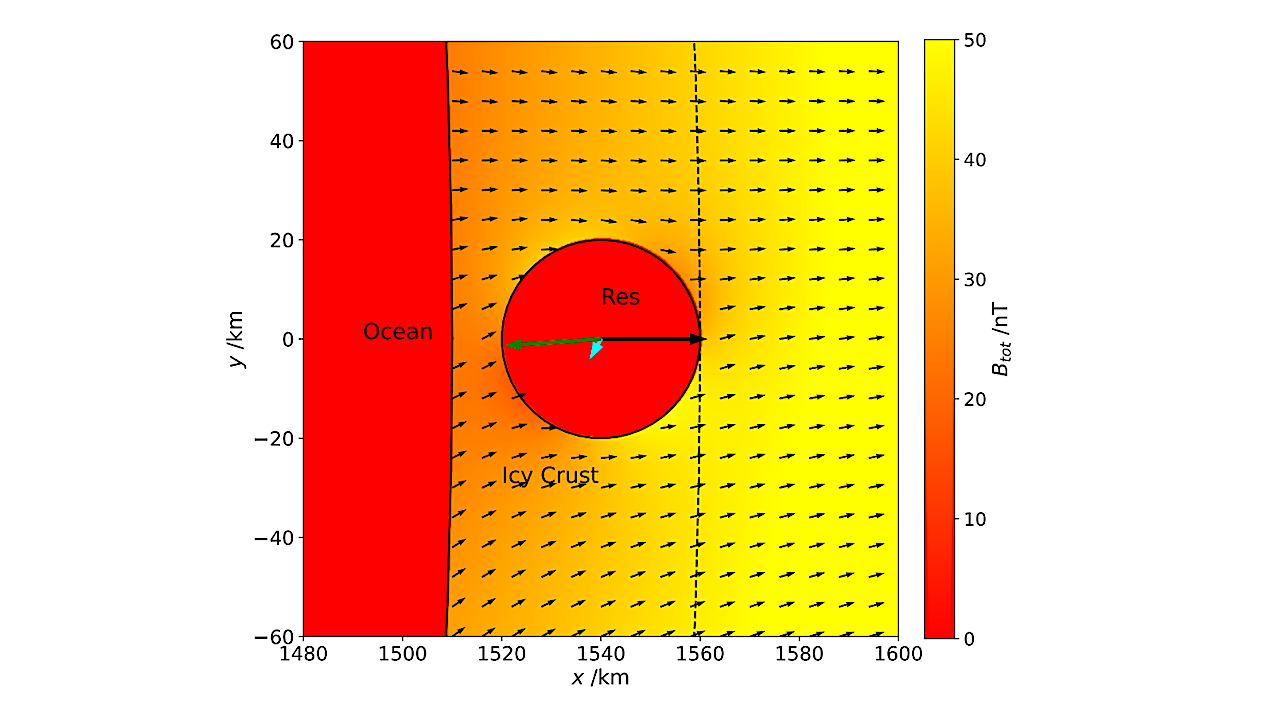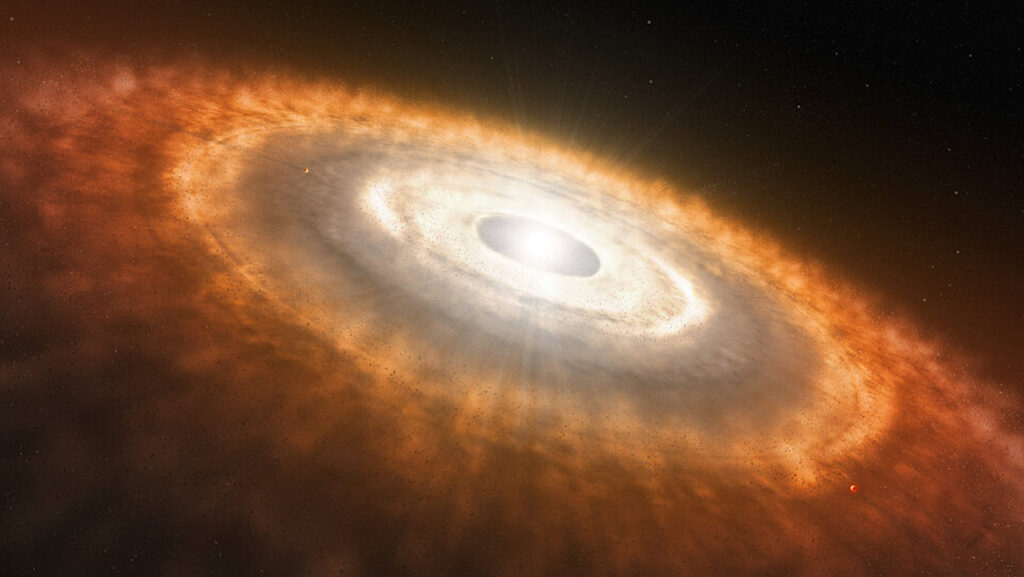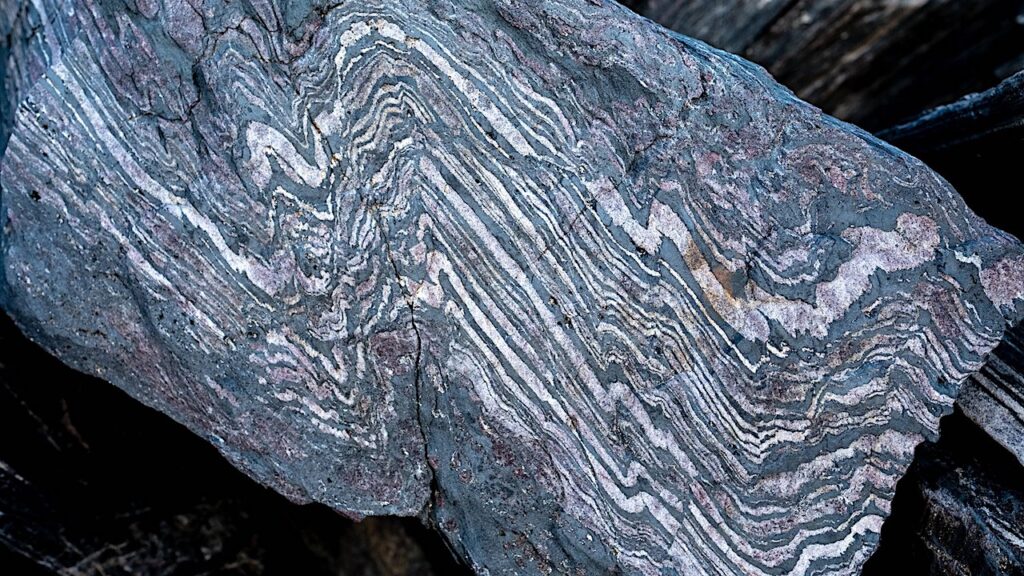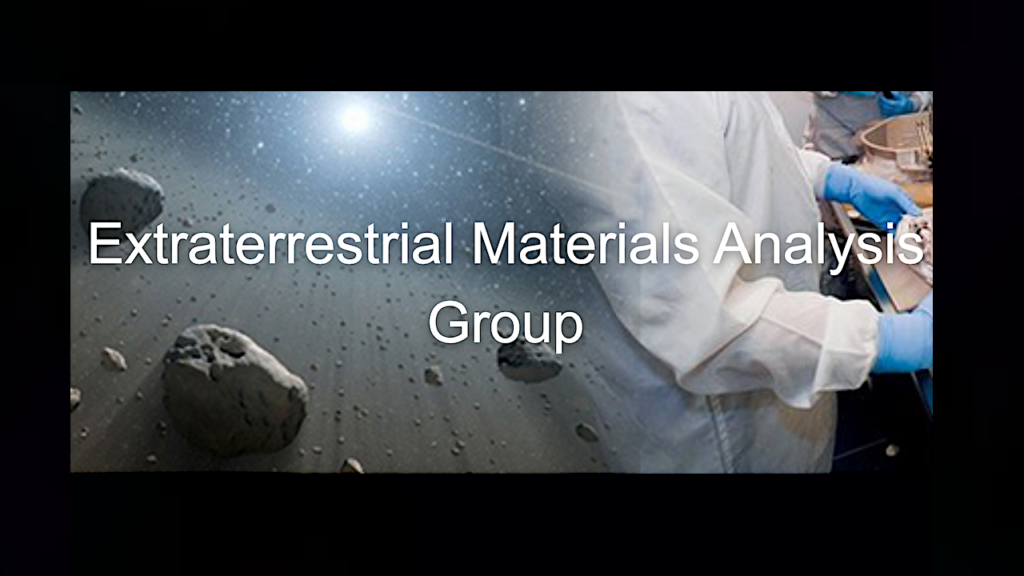Detectability Of Local Water Reservoirs In Europa’s Surface Layer Under Consideration Of Coupled Induction

The icy moon Europa is a primary target for the study of ocean worlds. Its subsurface ocean is expected to be subject to asymmetries on global scales (tidal deformation) and local scales (chaos regions, fractures).
Here, we investigate the possibility to magnetic sound local asymmetries by calculating the induced magnetic fields generated by a radially symmetric ocean and a small, spherical water reservoir between the ocean and Europa’s surface. The consideration of two conductive bodies introduces non-linear magnetic field coupling between them.
We construct an analytical model to describe the coupling between two conductive bodies and calculate the induced fields within the parameter space of possible conductivity values and icy crust thicknesses. Given the plasma magnetic field perturbations, we find that a reservoir cannot be detected during a flyby at 25 km altitude using electromagnetic induction.
Potential detection of liquid water reservoirs can be achieved by deploying magnetometers on Europa’s surface, where one magnetometer is placed directly on the target region of interest and a second one in the nearby vicinity as reference to distinguish from global asymmetries. With this method, the smallest reservoir that can be detected has a radius of 8 km and a conductivity of 30 S/m. Larger reservoirs are resolvable at lower conductivities, with a 20 km reservoir requiring a conductivity of approximately 5 S/m.
J. Winkenstern, J. Saur
Subjects: Earth and Planetary Astrophysics (astro-ph.EP)
Cite as: arXiv:2309.07674 [astro-ph.EP] (or arXiv:2309.07674v1 [astro-ph.EP] for this version)
https://doi.org/10.48550/arXiv.2309.07674
Focus to learn more
Submission history
From: Jason Winkenstern [view email]
[v1] Thu, 14 Sep 2023 12:36:51 UTC (588 KB)
https://arxiv.org/abs/2309.07674
Astrobiology








